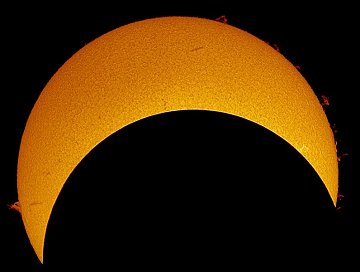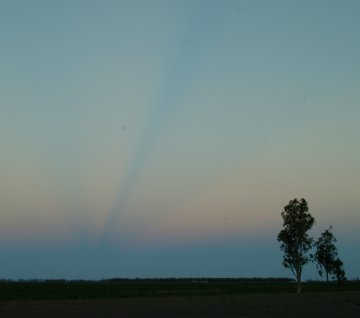 The space shuttle flies in April. Would you like a call when it soars over your backyard? Spaceweather PHONE!
The space shuttle flies in April. Would you like a call when it soars over your backyard? Spaceweather PHONE!
SOLAR ECLIPSE: On March 19th around 0230 UT, the Moon will pass in front of the Sun producing a partial solar eclipse visible from Russia, India, China and the northern reaches of Alaska: map. In those places the normally-round Sun will turn into a crescent and cast strangely-curved shadows on the ground.
During a similar eclipse in Oct. 2005, Sylvain Weiller of St Remy les Chevreuse, France, took this picture:

Photo details: Coronado SolarMax90, Canon 10D, ISO 400, 0.3 sec.
Caution: Even a sliver of exposed Sun can be blindingly bright. Sky watchers in the eclipse zone should excercise care and use safely-filtered solar telescopes or #14 welding glasses to observe the partial eclipse.
Partial Eclipse Photo Gallery
[eclipse animations] [astronomy alerts]
STRANGE SHADOW: Imagine driving down the road at sunset when, suddenly, a tall shadow lances up from the horizon. The funny thing is, there's nothing to cast a shadow.
This happened to Warren Brell recently. He was driving from Dalby to Chinchilla, Australia, but had to pull over to take a picture when this dark shadow appeared:

"This area is as flat as a tabletop for miles around," he says. "The shadow seemed to be coming from nothing at all."
Actually, something was casting the shadow. He just couldn't see it because it was behind his back. Brell was facing east; the sun was setting in the west. A low-hanging cloud in front of the sun cast a long, narrow shadow all the way across the sky. Contrary to appearances, the shadow was not leaping up from the horizon, but converging down upon it.
It's called an anti-crepuscular ray. If you see one, spin around and look west toward the sun. The view in that direction might be even better.

